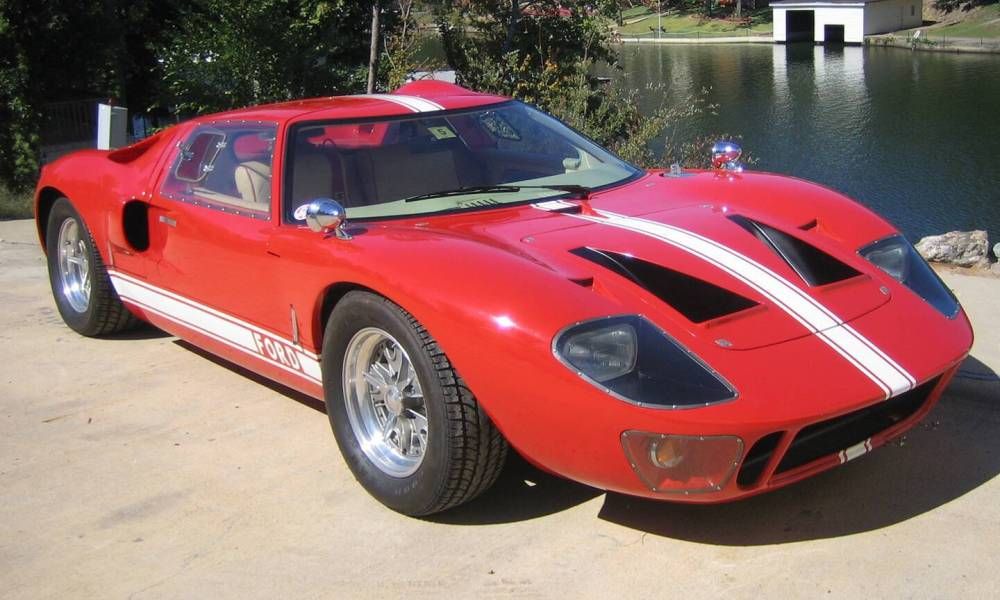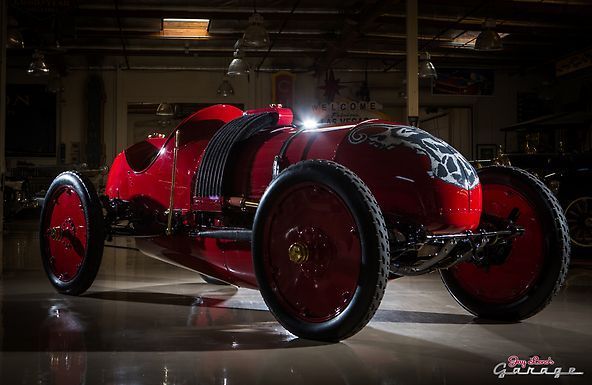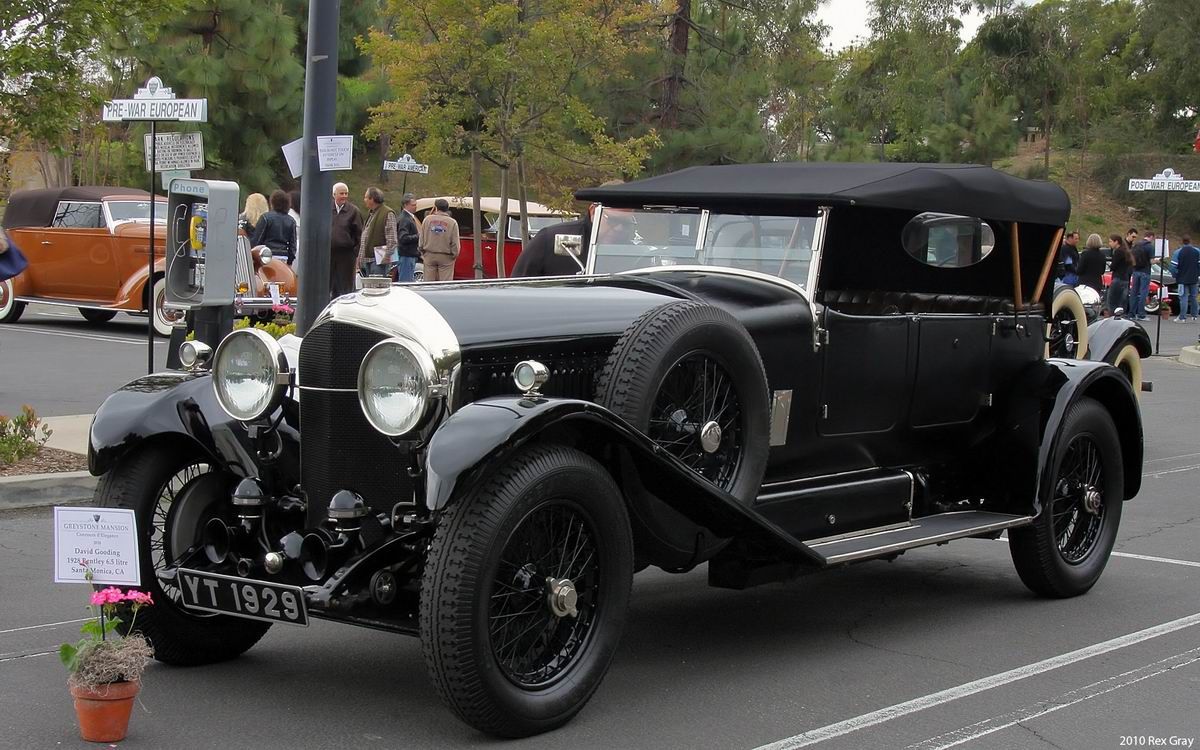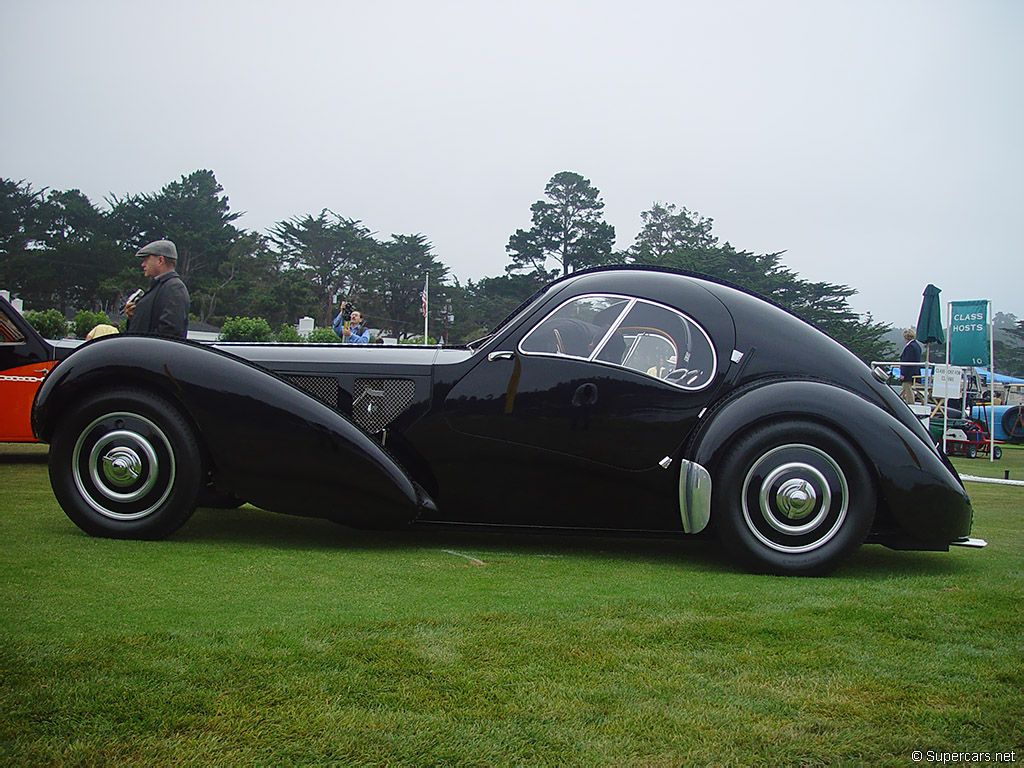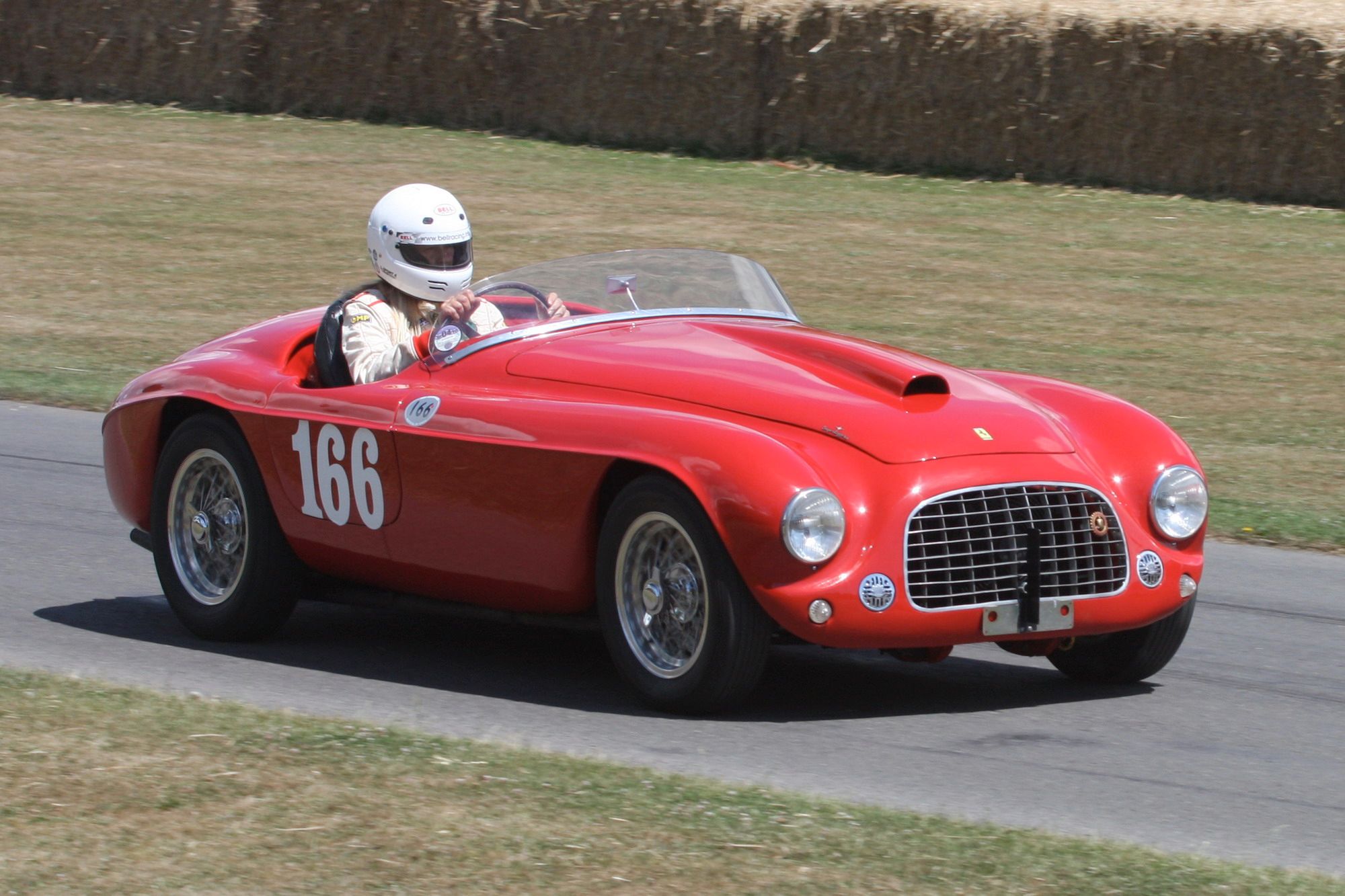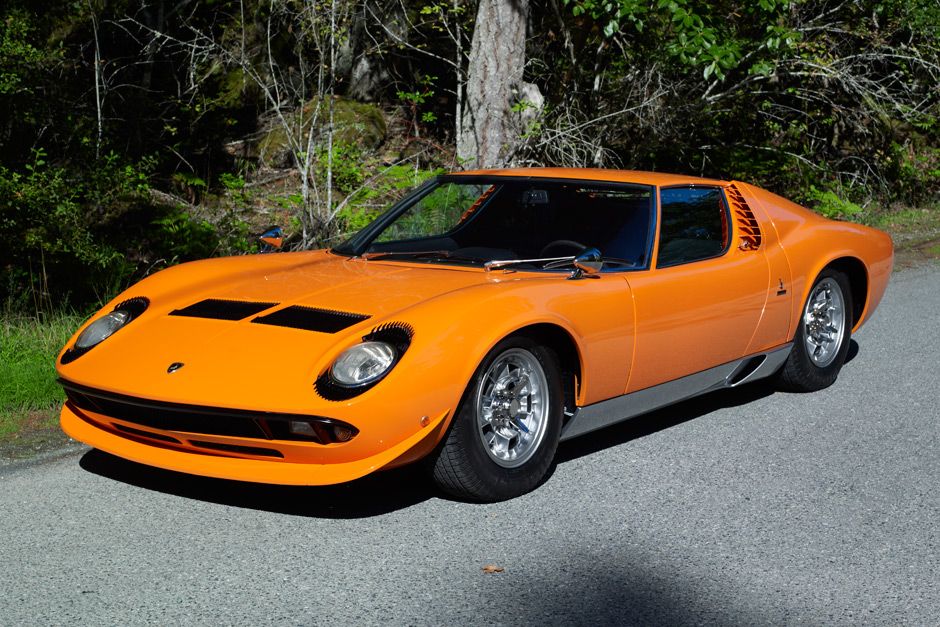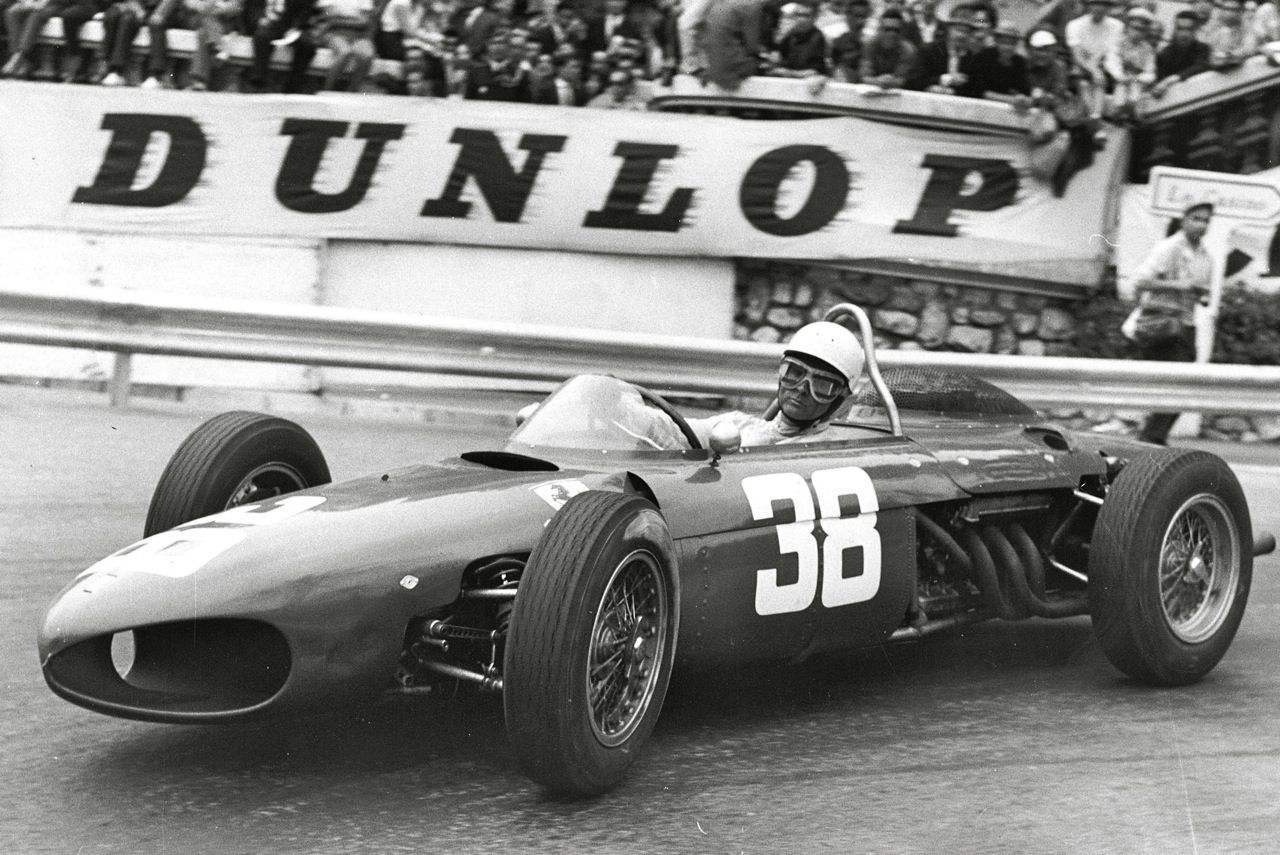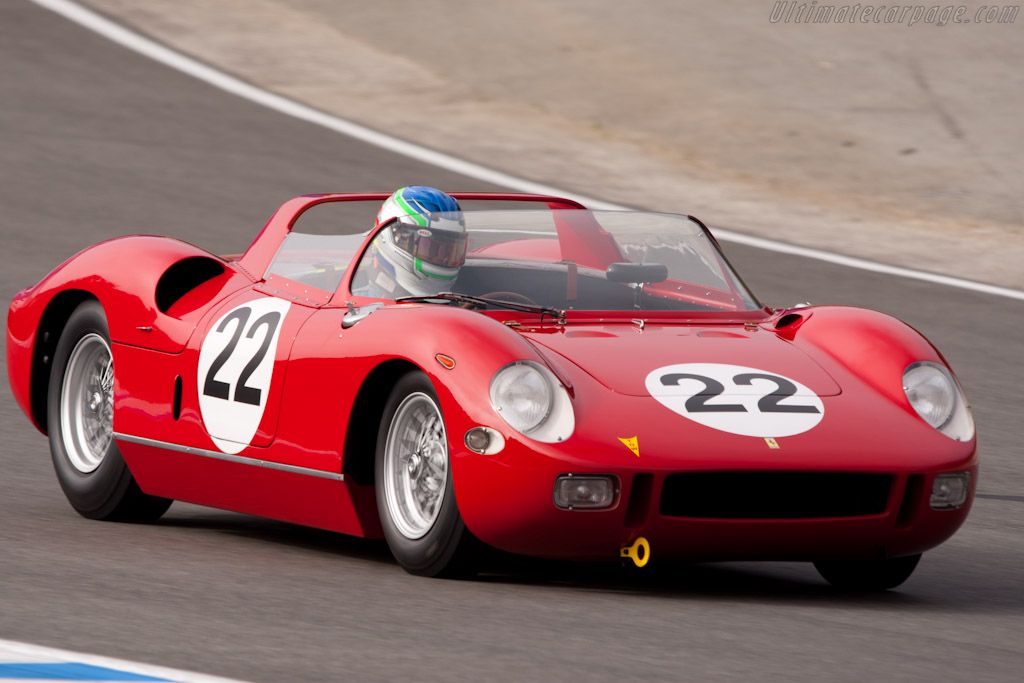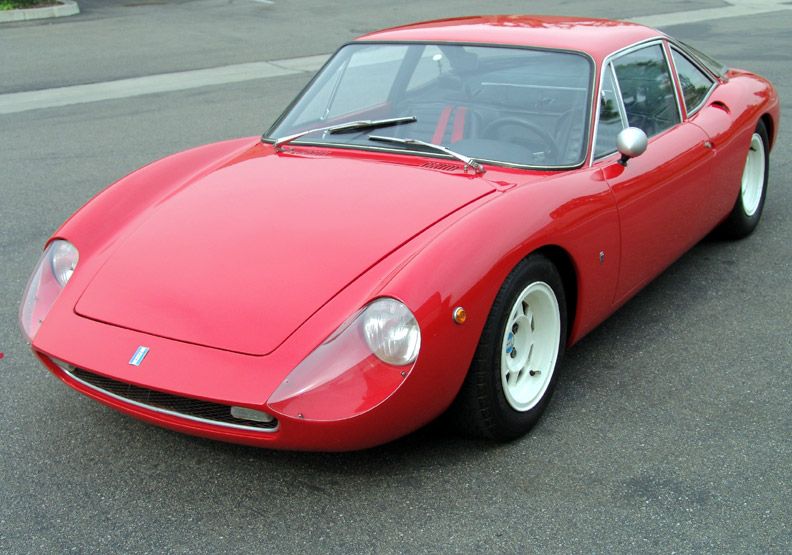"In the beginning, there was the 1966 Lamborghini Miura. And it was good." That's the standard dogma, the canonical story. But does the evolution of the supercar->ke177 really begin with the Miura->ke378...or end there?
The Miura was a groundbreaking car, for sure; it was luxurious->ke505, fast, mid-engined, cutting-edge and a high-end exotic. Sounds like the first supercar, right? But that configuration wasn’t created fully formed from an Italian’s rib. It started out in a primordial soup of ideas...this legendary Lamborghini->ke44 was ultimately shaped by its environment. And the truth is, the Miura may be much closer to the end of its evolutionary line than the beginning.
Supercars have long come to represent the razor's edge of technology. They're not just the fastest or most luxurious cars on the road; supercars above all else represent the latest and greatest technologies on offer. They drive the progress, the evolution of all automobiles by throwing the latest mutation into the crucible of competition, ensuring that only the strongest of ideas survive.
In this article, I'm going to trace the evolution of the supercar all the way from its primordial form up to the carbon-fiber, hybrid->ke147 monsters on offer today. Along the way we'll visit that "first" supercar. But really, the Miura is just a newer branch on one very tall evolutionary tree. This story ends where others might begin it...and begins at the end of an era.
Genesis -- The 1910 Model 60 Buick Bug
The end of the era in question was that of the horse and buggy -- steam trains and flightless humans. The supercar's story begin's there, with the Model 60 Buick Bug.
Does this one sound familiar? It might if you're a regular reader of Topspeed. I actually mentioned this one in a companion article published just last month, The 5 Most Important Cars in the Evolution of the Hot Rod. No, it's not that we've started recycling content at Topspeed, it's just that the Model 60 Bug is that important.
In the previous article, we talked about how the Bug racer might have been the genesis of all hot rods and race cars since; and equally is it so for supercars. Built by none other than David Dunbar Buick himself, the Bug was (as far as anyone knows) the world's very first factory, purpose-built performance car. Packing a hilariously huge 622-cubic-inch four-cylinder, the 57 horsepower, 2,600-pound Bug was utterly insane for its day. Capable of more than 100 miles per hour at a time when the national speed limit was 20 mph, The Bug and its driver Louis Chevrolet (yes, that Chevrolet->ke199) utterly dominated every event it entered.
Granted, the Bug was a purpose-built race car, there were only two of them, and they were never made for sale to the public. Still, in every other way, it set the pattern for supercars for decades to come.
Engine: Absolutely massive. The Bug was effectively an engine with wheels, with the driver stuck on as kind of an afterthought.
Power-to-Weight Ratio: True, 57 horses in a 2,600-pound car would barely keep up with traffic today, but the idea of packing the lightest possible chassis with the most power available is still the basis of almost every supercar on the market.
High-Tech Materials: Today's supercars use a lot of high-tech composites and titanium; but aluminum remains far and away the most common material used to build for light weight and high strength. Care to guess where that started? You got it: The Model 60 Bug was the first performance car in history to use aluminum body panels, specifically for the purposes of saving weight. These days, we build entire unibody chassis out of the stuff, but Buick->ke17 was using aluminum to save weight more than a century ago.
Aerodynamics: This is a very big deal, and far and away the Bug's biggest contribution to supercar performance. Take a good, long look at that body. The torpedo-like nose, those streamlined flanks, those Bonneville wheel covers, smooth curves and that stunning boat-tail rear. Then, remember that at the time, we knew practically that about aerodynamics. How much of nothing? Put it this way: The Wright Brothers took their first flight at Kittyhawk just seven years before this body was built. nothing. And they barely even got off the ground. As automotive aerodynamics go, the Bug was a quantum computer in an age of pen and paper. Add a set of fenders, and that shape could have been sculpted in a wind tunnel yesterday. But it wasn't built yesterday -- David Dunbar Buick sculpted those aerodynamic aluminum panels Seven years
105 years ago. 0}
With the basics of performance established by Buick on the racetrack, street cars as a whole got faster and faster through the 1910s. But as groundbreaking as the Bug was, it was also a long way from luxurious. And that's a problem when you're trying to sell very expensive machines to people with the money to afford them.
That was a pretty small pool, too. The Post-WWI years (even before The Great Depression) were a lot like today: "Middle class" was a thing that existed mainly in concept, the poor were very poor and the rich were obscenely rich. That group of one-percenters were the only people with enough money to buy anything faster or more luxurious than a Model T->ke5255, and they were happy to spend money on anything that let the Poors know just how Not Poor they were.
Note:1908 Ford Model T shown here.
For that reason, stripped-down speed machines from mass-market manufacturers started going away in favor of high-dollar luxo rides from American and European->ke139 niche manufacturers. Much like our own recent post-recession years, it was during this time period that price tags, power levels and performance figures began skyrocketing on high-end luxury cars. In 1920, a British company called Ensign first coined the term for their Ensign Six model. The car's typically understated tagline:
"If you are interested in a supercar, you cannot afford to ignore the claims of the Ensign 6."
So, there it is -- history's first recorded usage of the word "supercar." Unfortunately, you won't find out much about the Ensign Six it described, because the first supercar was quickly overshadowed by a very similar car from a certain racing outfit that had recently gotten into the car business. The year after Ensign debuted it's 6.6-liter monster, Bentley->ke15 produced a visually similar car with a 3-liter engine. By 1926, Bentley had installed its own 147-horsepower, 6.5-liter straight-six engine.
Note: Bentley Speed 6 shown here.
This big Bentley was more than just quick; like the Continentals->ke3108 of today, it was both stupid fast and luxurious in a way that the Ensign it ripped off (err, "replaced") could only dream of. While the Ensign could lay claim to the mantle of first supercar, it was Bentley who firmly the supercar as equal parts upmarket luxury and advance raciness.
Note: 1926 Bently 6.5 shown here.
And race Bentley did. In 1928, they released what we might call a "superleggera" version of the 6.5-liter -- the legendary, lightweight Speed Six. Granted, it was only "lightweight" by Bentley standards, and still had an 11-foot wheelbase. But still, the Bentley Superleggera spent many years terrorizing race tracks around the world, and dominated LeMans->ke1591 in 1929 and 1930. A fellow racer, an Italian by the name of Ettore Bugatti, called those massive Bentleys "The fastest trucks in the world."
Speaking of whom...
Downsizing -- The Supercar Tribe Gets Smaller
Back in the 1930s, there was kind of a schism occurring in the supercar world. On one side, you had guys like W.O. Bentley. Bentley held what we might think of as the American perspective on luxury and performance. To Bentley, bigger was better, and faster meant installing a bigger engine to match.
On the other side was a new group led largely by Bugatti->ke16. Bugatti had been racing and building cars since 1909, and might be seen as the progenitor of all modern Italian supercar makers. All right, technically, Bugatti the company was based out of Molsheim, France, which was at the time part of the German Empire. But Ettore himself was Italian, and his approach to building supercars certainly reflected that.
Where Bentley built high-speed, high-power monsters, Bugatti swung to the other end of the spectrum and focused on handling, low mass, a high power-to-weight ratio, and eye-watering sexiness. Basically, everything we've come to associate with supercars ever since.
Bugattis had been winning races for decades, but it was the 1934 Type 57 that really cemented this company's place in history. Specifically, the supercharged, lowered, lightweight Type 57SC. This car featured a super-advanced, twin-cam 3.2-liter engine whose 200 horsepower still stands up well against similar displacement engines of this century. Granted, it did require a supercharger to get that high, but these cars also ran on 60 octane fuel and couldn't run more than 6-to-1 compression. If you were to bump this same engine's compression up to a modern 9.5-to-1 and put it on 93 octane, it would probably produce the better part of 300 horsepower from 3.2 liters.
Note: Buggati Type 57 shown here.
But even with 200 horses, the 57SC was a banshee. At a mere 2,100 pounds, it weighed 500 pounds less than the 1910 Buick Bug, and a bit less than a modern Lotus Exige (with a full tank of gas). In fact, given it's power-to-weight ratio, there's little doubt that this 1930s supercar would run nose-to-nose with either that new Exige, or the more heavyweight Dodge Challenger SRT. This car was in every way the direct beneficiary of Bugatti's decades of racing experience, and plenty of that expertise found its way into the Type 57.
And just look at the thing.
For sure, those panels were aerodynamic; minus the headlights, probably not much less so than a 2016 McLaren P1. Thank the Bug for that feature. But more than anything else, this car was then and remains simply one of the most beautiful things ever to roll out of an automobile factory. So, a quick rundown:
-Italian design
-Production vehicle
-Two seater
-Lightweight
-Designed for handling and speed
-Smaller-displacement, higher-horsepower engine
-Luxury appointments
-Sky-high price tag
-High-tech race car stuff in a street car
-All the latest chassis and engine refinements
-Advanced aerodynamics and engineering
-Stunning bodywork
Forget what anyone tells you about later Lamborghinis and such -- the Bugatti Type 57 is without a doubt the very first fully modern production supercar. Almost anything we might say about supercars today (apart from drivelines) applies just as well to the Type 57SC as any million-dollar, carbon-fiber hypercar of today. This Bugatti forever set the standard for what we would come to expect of supercars from here on out.
Exile -- The Supercar, GT and Sports Car Split
After the Second World War, most of Europe's big automakers were either bombed-out husks or operating in countries themselves in the midst of a Post-War depression. That was certainly true in Germany, which had a few new holes in the ground where roads and factories used to be. But France, Italy and especially Great Britain were also hit hard both in terms of armament and economic depression. But a few lights did emerge from the cloud of war.
Two shined from England, in the form of Jaguar->ke39. Formerly the Swallow Sidecar Company, Jag re-formed in 1947 as a sports-car maker. It appeared alongside Healey, whose 1947 2.4 was the fastest car in the world, at 110 mph. Both followed Bugatti's formula of small, light sports cars intended primarily for upmarket buyers.
On the other side of the continent, a little racing outfit called La Scuderia Ferrari->ke664 had found its former works bombed by the Allies in 1944. In 1946, they rebuilt; but finding themselves a bit short of money and sponsors, Ferrari->ke252 began reluctantly producing road-going performance cars as a means of funding the race team. With most countries around it bombed into oblivion and everyone in Europe broke, Ferrari began eyeing the only market in the world that came out of the war better than ever.
In the United States, our newly awakened industrial base quickly came to supplant Europe's. Soldiers returning from war were flush with cash; but in a bittersweet twist, the 400,000 who didn't return played an equally important role in our resurgence. Since the end of the Industrial Age, America had been plagued with a labor surplus that kept everyone's wages next to nothing. However, with 400,000 adult males not returning, and a million new job positions opening up, America's remaining middle class exploded. All of a sudden, people could afford to buy all but the highest-end supercars.
A whole new market opened up in the U.S., and later the world: budget supercars.
In this era, from 1945 to the late 1950s, supercars gradually began creeping back up from race cars->ke148 civilized for road use, to purpose-built road cars with all of the luxury equipment available. Full bodies, high-tech, and high-rpm, small-displacement engines were in, all following the basic Bugatti mold of supercar greatness. But another schism was on the way.
Note: Jaguar D-type shown here.
Through the 1940s, you saw mostly little roadster-type supercars from Ferrari, Healey and Jaguar. These were basically the upmarket versions of cheaper offerings from makes like MG->ke56, which offered fun in the entry level. These cars were hugely popular in the U.S., especially among middle-class types and single guys just looking for a fun weekend toy. This genre eventually grew up into what we'd call "performance" or "sports cars" today.
Note:1950 Ferrari race car shown here.
Cars like the Chevrolet Corvette->ke1280 and Jaguar E-Type->ke1246, offered supercar-threatening performance at a fraction the cost. For sure, many of these cars became legends in their own rights, and at least a few spawned legitimate supercars like the 1969 Chevy Corvette 427. But, as lines in themselves, they weren't the kind of bleeding edge, "money is no object" machines that the Type 57SC was.
No, the Bugatti-type supercar descendants more or less split into two lines in the 1950s and 1960s.
On one side, you had your Aston Martin->ke13s, Mercedes 300SL->ke1995s and the like. These were more or less full-bodied luxury cars that were also really fast. They're what we'd call today Grand Touring, or GGT cars. GT cars were then and remain the largest high-end performance segment, and practically everyone who had a bent toward speed made at least one. That certainly included Ferrari and Jaguar, but Ferrari at least for the most part stayed its original course:
Building race cars for the street.
And so it came to be in the 1950s that performance cars split into three fairly distinct categories: budget-priced sports cars, luxurious grand-tourers and hardcore supercars. Granted, going into the 1960s, Ferrari was about the only competitor in that last category; but Enzo->ke389 wouldn't be alone for long. He was about to launch a revolution and enter a war of his own making.
The Mid-Engine Promised Land -- Theft, Spite and War
And here's where we get to the "first" modern supercar. You already know it: the Lamborghini Miura. Obviously, as you've seen so far, there's a lot of history between 1910 and 1966 -- and a bit more to go before we get to today's default supercar configuration.
Note: Lamborghini Miura shown here.
In the 1950s, Enzo Ferrari produced a lot of great front-engined road cars, and more than a few epic race cars. But Enzo didn't like getting beaten on the race track, and that's exactly what was happening on [Formula
One->ke190] and Two tracks. But in 1960, Ferrari found an edge when he installed an engine in the middle of his Formula 2 "156" race car, and began dominating races. He moved the configuration up to F1 the next year, and the mid-engine configuration proved just as unbeatable there in 1961.
Note: Ferrari F1 car shown here.
The next year, Enzo applied the same idea to a LeMans racer, the full-bodied 250 P prototype. In most ways, the 250 P was the same as the F1 car, with a 12-cylinder, 3.0-liter engine and a full body. Of course, it destroyed all comers in the 1963 season, and finally the mid-engine format had gained the full-spectrum legitimacy it deserved. The public was clamoring for a mid-engine road car of their own -- but Enzo wasn't exactly interested. At least, not at first.
Note: 1963 Ferarri 250p shown here.
Oh, he did introduce a road car version of the 250 in November of 1963, and the 250 LM went into production in 1964. But, unfortunately, someone else had already beat him to it.
Earlier in the year, another Italian company had released a mid-engine road car that looked remarkably similar to Enzo's race-winning 250 P. It had a 150-horsepower Ford Cortina engine, a Volkswagen Beetle->ke318 transaxle, suspension bits from a British triumph->ke2389, and a body styled by Italian firm Ghia. You might recognize the name. Hint: "Ford engine in a mid-engine Italian car."
Got it?
That's right -- it was De Tomaso. The very same company that brought us the Ford-engined Pantera a few years later. De Tomaso's first supercar, the Vallalunga, looked for all the world like a Ferrari 250, but had a roof and wasn't anywhere near as fast or good-looking. It was, however, available for sale to the public while Ferrari was still decimating all comers at LeMans, and that was all the free advertising De Tomaso needed to make a name for itself.
Note: De Tomaso Vallalunga shown here.
(Note, Pantera enthusiasts: You'll appreciate the coming irony.)
Of course, this blatant rip-off didn't make Enzo too happy, and being Italian, he immediately set about a mission of spite. Right after De Tomaso introduced its take on his car, Enzo put a roof on the 250, introduced it and Paris in November of 1963, and began selling it in limited numbers as the 250 LM in 1964. But how did De Tomaso beat him to the sales floor so quickly? Rumor has it De Tomaso had some help -- in the form of spite from a certain American.
The Ford->ke31 and Ferrari relationship is a pretty well-known story at this point. But quick summary: Ford and Ferrari had a longstanding friendship. Ford wanted to get into LeMans racing, and Ferrari was considering merging his company with Ford as a subsidiary. In the spring of 1963, Ferrari got serious about the idea, and Ford poured millions of dollars into his racing effort. However, Ferrari backed out of the deal when he found out he wouldn't be allowed to race at Indy, since Ford already had engines in the race.
A bitter split followed. Ferrari picked up his Italian engineering and went home. Henry Ford II, enraged, ordered his engineering department to come up with a car specifically designed to decimate Ferrari at LeMans. Barely a year later, the first GT40 rolled out of Ford's Advanced Vehicles Skunkworks, and it went on to crush Ferrari in a 1-2-3 sweep at the 1966 LeMans race. That much is a matter of history.
Note: Ford GT40 shown here.
But somewhere between Henry's falling out with Enzo, and him building his own Ferrari-killer, De Tomaso debuted its own copy of the Ferrari 250 P.
With a Ford engine.
Of course, nobody's claiming that De Tomaso hadn't already been working on the Vallelunga. It was. A fact of which Henry Ford II would have been well aware. Did Henry help De Tomaso get off the ground, get the various parts of their car together, and cut them a sweetheart deal on engines? All things considered, it doesn't seem too unlikely. Ford knew Enzo desperately relied on road-car sales to fund his LeMans team -- what better pre-emptive strike than stealing Ferrari's thunder and cutting off his supply of money? It's a long-persisting conspiracy theory -- but there's really no reason to think it isn't true. And if so, that strategy certainly proved its worth in 1966.
Now, here's the beautiful irony for Pantera enthusiasts: For many years, they've lived with accusations that the Pantera was a budget ripoff of the GT40. In truth, the Pantera was the evolution of a ripoff of a Ferrari, which Ford probably underwrote to make sure the GT40 was successful in the first place. Without De Tomaso cutting into Ferrari's funding for two years, it's entirely possible that the GT40 would have fallen flat on its face in 1966.
Strategy.
After all that, the little spat that brought Lamborghini into being seems almost quaint.
Long story short: Feruccio Lamborghini was a successful tractor manufacturer with a penchant for Ferraris. He loved the cars, but wished they were a little more civilized. In or about 1964, the clutch went out on Lamborghini's Ferrari, and he took it back to Enzo complaining. Probably not in the best of moods (considering), Ferrari told him "If you don't like it, build your own car!"
In 1966, immediately after losing LeMans to Ford, Enzo watched Lamborghini do just that. The Miura launched to massive acclaim, and somehow went on to claim the canonical title of "world's first mid-engine car."
Some years, you just can't win for losing.
Revelations -- The Final Evolution
After all that, it almost seems funny to tag the "world's first supercar" in as an end-note, and everything that's happened since as kind of an afterthought. But I just did, and it is what it is.
Since the Miura, supercars have gotten a lot faster. They've begun using more advanced materials and engines. In the 1990s, they got a lot more refined, thanks in no small part to Volkswagen's purchase of Lamborghini. That bit of German engineering and practicality did a lot to soften the utter insanity and deliberate uselessness of supercars at the time. With modern Lambos effectively as civil and reliable as any Audi->ke14, the modern game has been building cars that drive like Toyotas->ke88 most of the time, but perform like supercars when called on.
In recent years, supercar makers have discovered the wonders of augmenting their cars' performance with electric motors to provide fuel economy and off-the-line torque. Last year, Koenigsegg->ke43 took that idea a step further by eliminating its Regera's ->ke5077 transmission completely, and relying on nothing but electric motor torque to get off the line. Full electrics are the next logical step, and at least come with the option of full-time, four-wheel torque vectoring that can take a vehicle's handling limits to well past what any human being can exploit.
All told, though, these are what Creationist types would probably call "micro-evolutions." Adaptations, refinements and improvements within a species. The brute fact is that for the most part, supercars haven't noticeably involved since the "first" one in 1966. There's been very little speciation since then, apart from changes in appearance and specialization. Darwin would call today's highest tech McLarens merely finches of a different beak to the Miura.
But no matter where the evolution of the supercar has taken it, and no matter where it goes from here, one thing's for sure...
This animal is everything its ancestors ever were, and more.

